At this time, although the Ha Nhi people's Tet has passed, the spring atmosphere in that borderland seems to last until now with the atmosphere of production labor and vibrant community cultural activities.
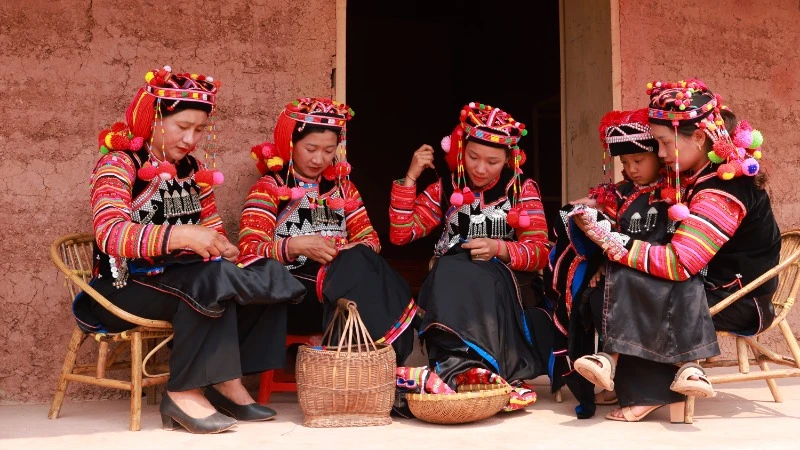 |
Ha Nhi women are very good at embroidery and sewing. |
The life of the Ha Nhi ethnic community is always closely linked to its rich cultural identity. The beauty of women here is reflected in their portraits and daily work, and shines during every festival, especially when they wear their colorful, meticulously embroidered traditional costumes.
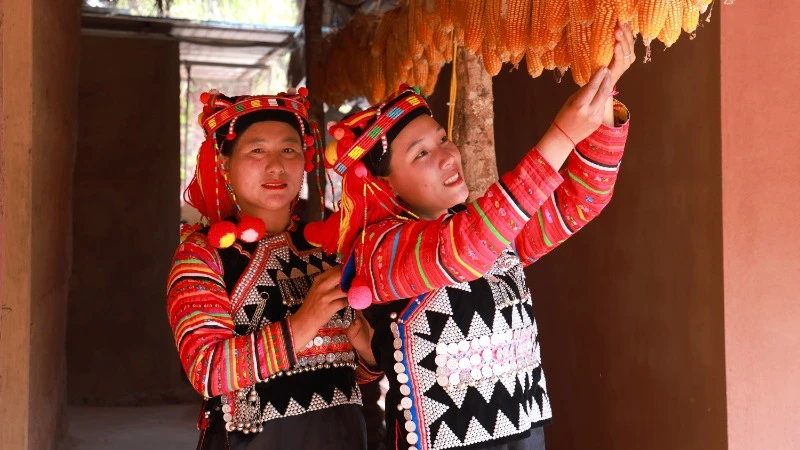 |
Traditional costumes are full of color and shape. |
The traditional costume of Ha Nhi ethnic women has red as the main color, representing the connection between people and nature; strong vitality and hope, luck, and national pride. A complete costume must include a headdress, ao dai, a short shirt, and pants.
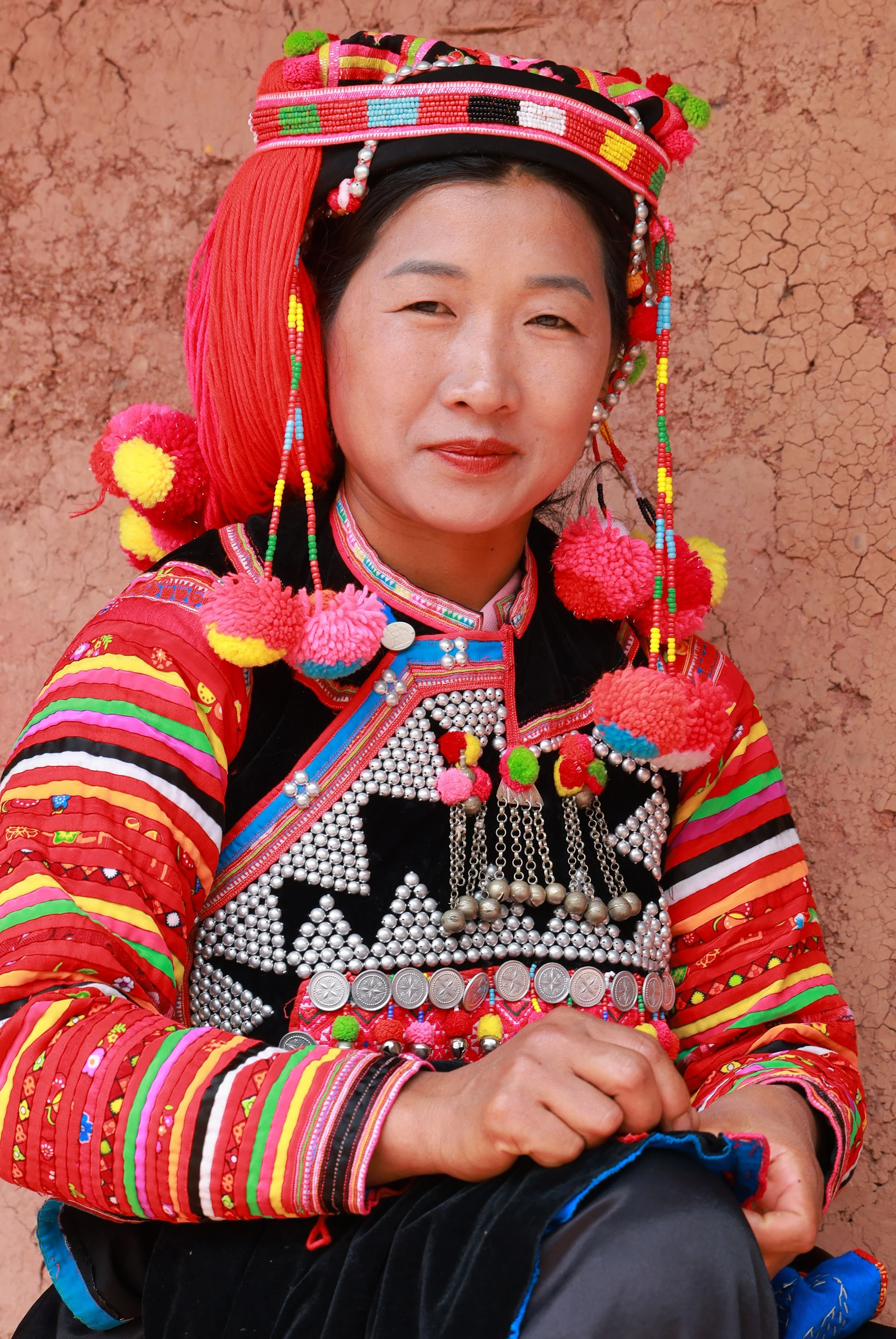 |
Ha Nhi ethnic women have a gentle and fresh beauty. |
Each part of the costume is elaborately sewn, containing symbols of cultural and religious elements. In particular, the women's headdress is always a highlight. The headdress is made from details such as: a hair ring (tro pa) with colorful threads, a square scarf sewn with layers of interwoven colored fabric, and a fringe of colorful beaded tassels.
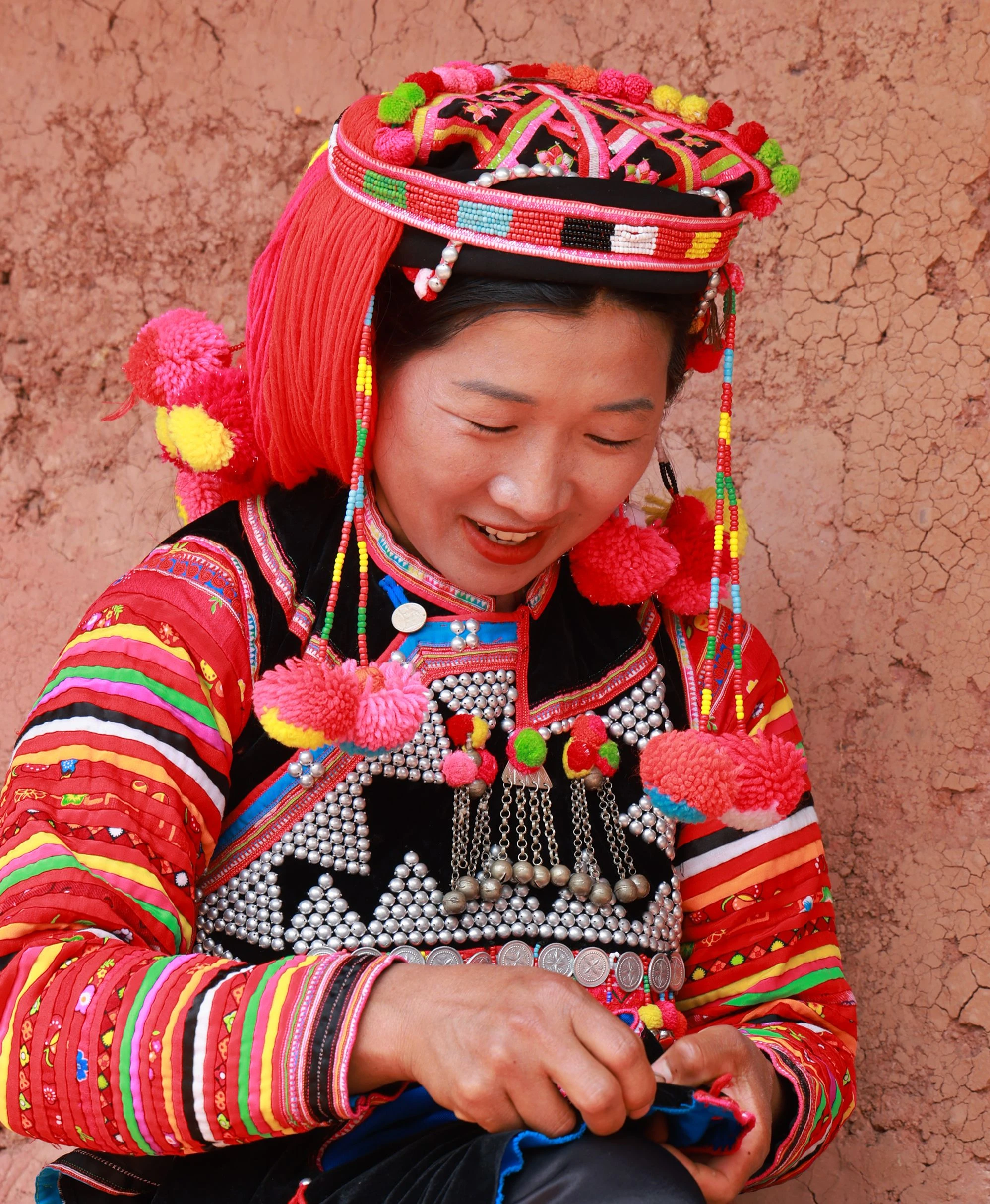 |
With their diligent and persistent nature, they sew whenever they have free time. |
The Ha Nhi women's ao dai is designed with a split chest, slits and buttons, the sleeves are patched together with colorful borders. The short outer shirt is decorated with silver buttons and flower and mountain-shaped jewelry, standing out on a black fabric background, creating a harmonious, solemn and outstanding look.
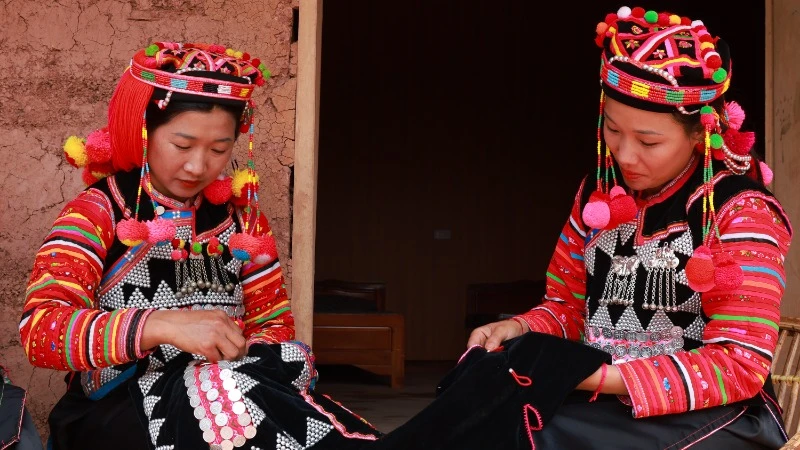 |
In traditional costumes, the headdress is very elaborate. |
The highlights of the costumes not only make them stand out, but also show off the ingenuity and diligence of the women because these are not ready-made clothes but are mostly handmade. Each costume is not simply a garment but also contributes to the spiritual life of the community.
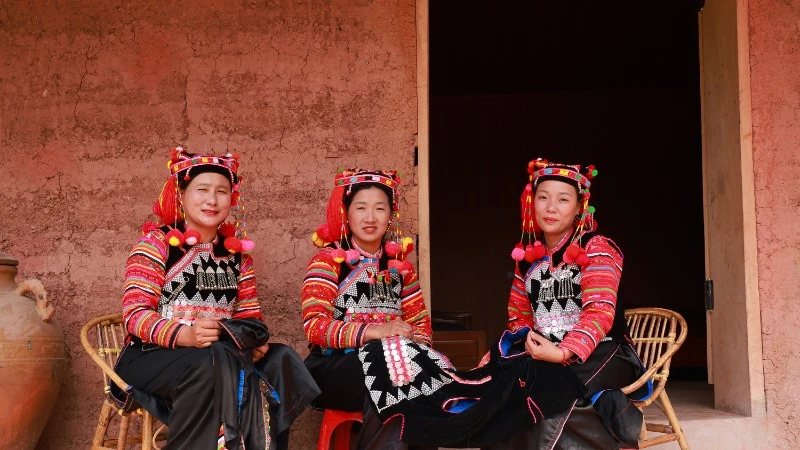 |
The Ha Nhi people are always proud of their identity through their costumes. |
For women, costumes are a source of pride in preserving and promoting the cultural values of their nation, and are a measure of maturity and dignity. Sharing about costumes, Ms. Po My Le, a resident of Sin Thau commune, currently the Party Secretary of Sen Thuong commune, Muong Nhe district, a prominent figure in preserving traditional culture, said: "For Ha Nhi women, costumes are associated with culture and tradition, so they are made very elaborately, with many stages and taking a lot of time.
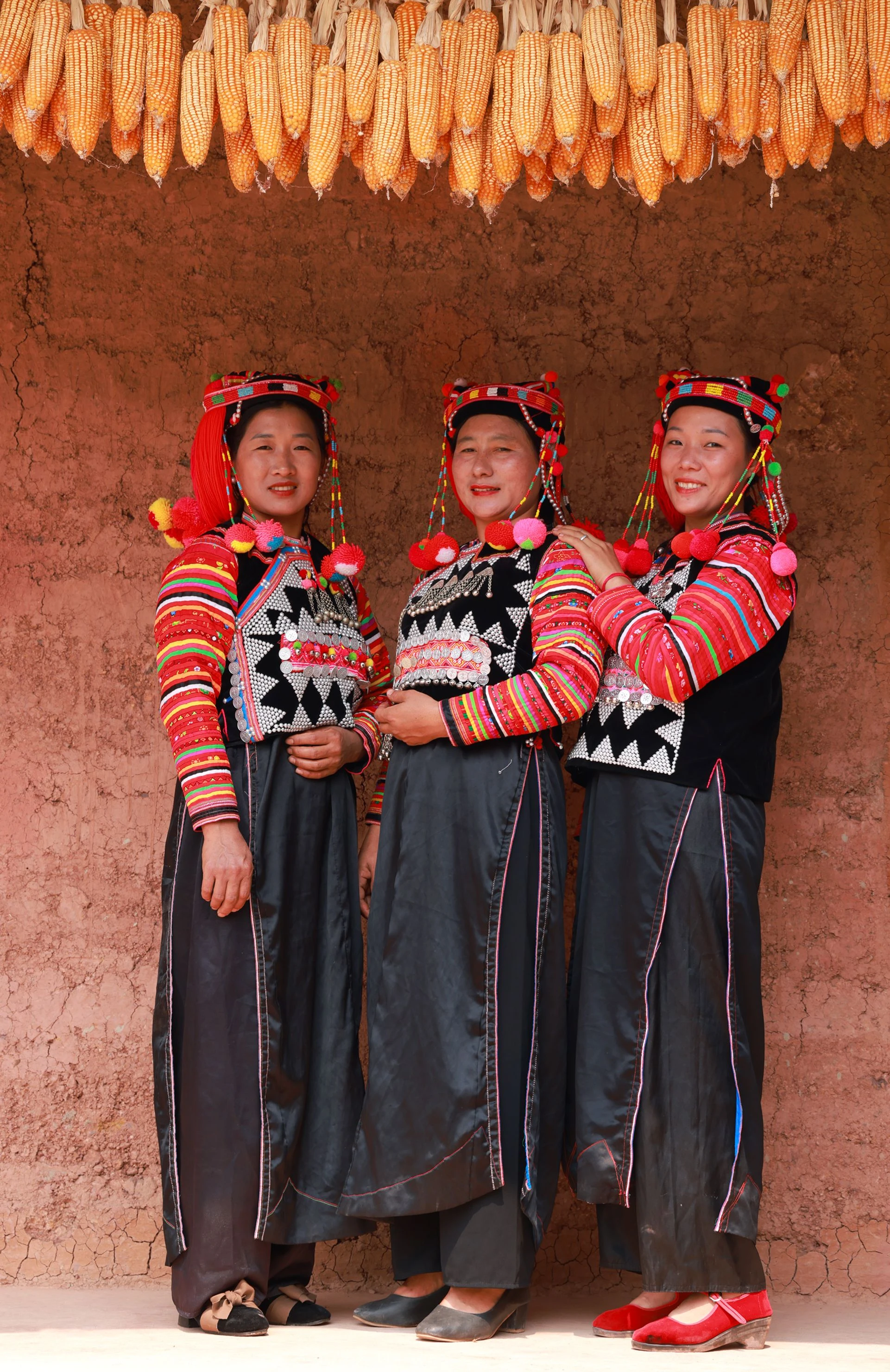 |
The rustic beauty of the border region. |
Ms. Po My Le calculated that on average, it takes a woman more than 3 months to complete a costume. She also shared that if anyone is too busy or not skillful and persistent enough to sew it themselves, they can buy it from their own people, but the price is quite high, about 6-7 million VND/set, a not small amount for people in the highlands.
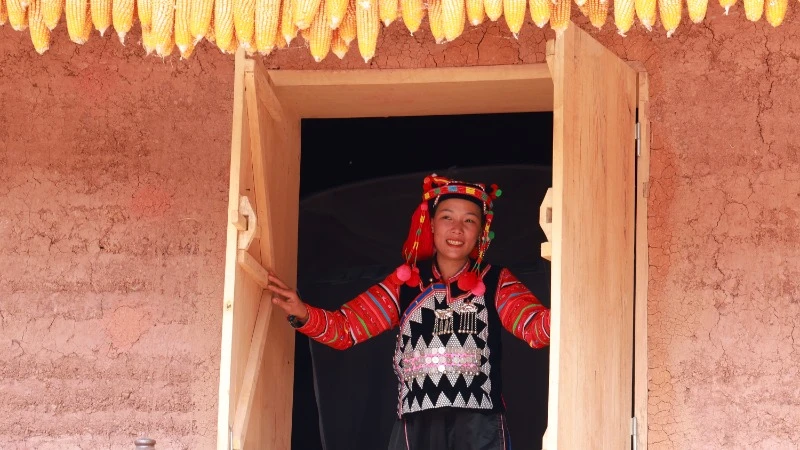 |
Ha Nhi women are now actively involved in business and tourism. |
However, according to Ha Nhi women, the value of each outfit lies not only in its material value but also in its spiritual meaning. This is an indispensable feature in every festival and New Year of the people, when each woman wears her most beautiful outfit to show respect to her ancestors, to the earth and to the community.
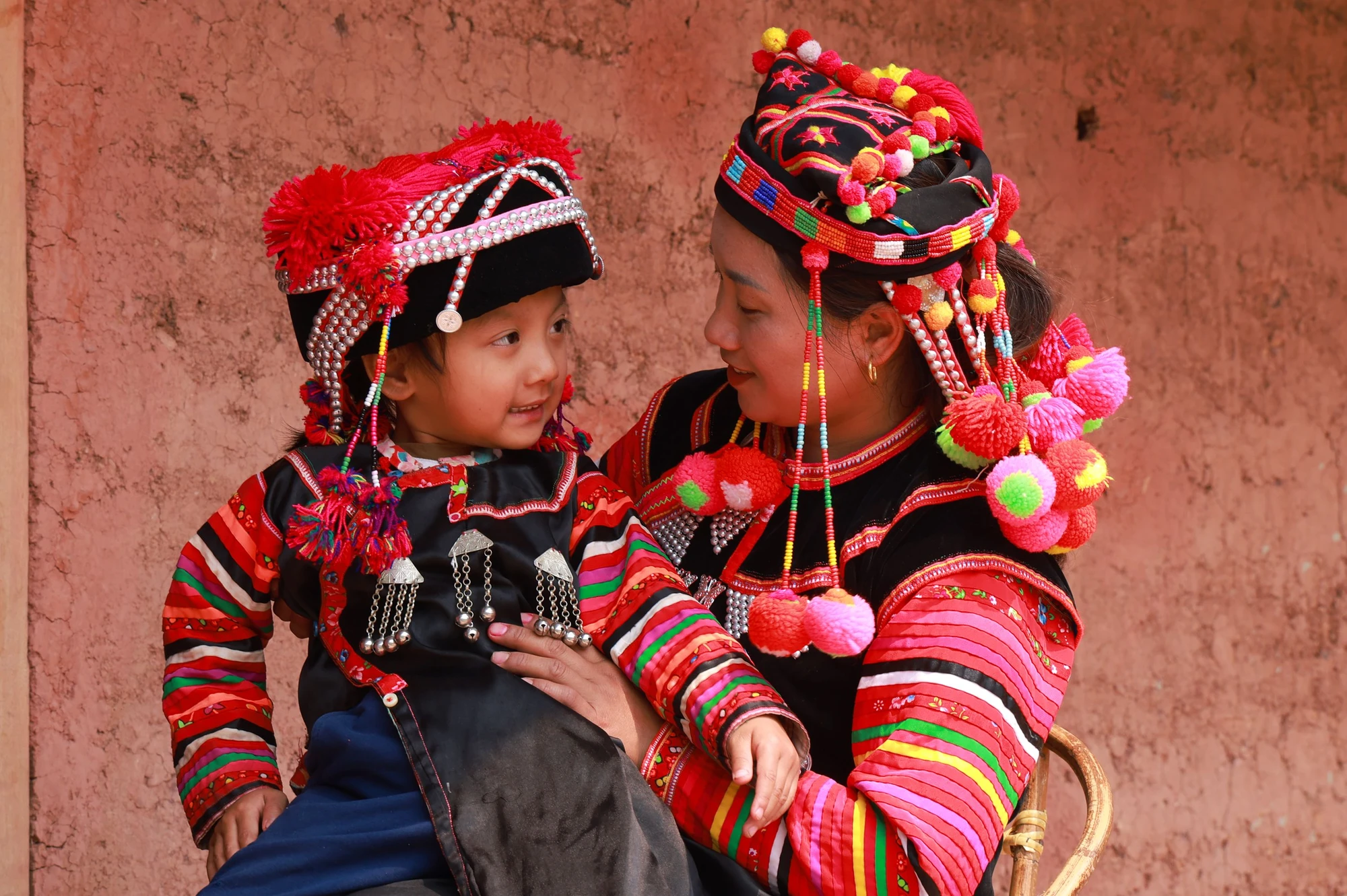 |
| Girls are indoctrinated into traditional culture from a young age. |
According to the concept of the people here, women have many important responsibilities. If there are women in a house, looking at the large pile of firewood, neatly arranged, you can immediately know that the women are hard-working and diligent. When Tet comes, they prepare the food, welcome guests, sometimes waiting for guests to almost finish eating before sitting down to sit at the table.
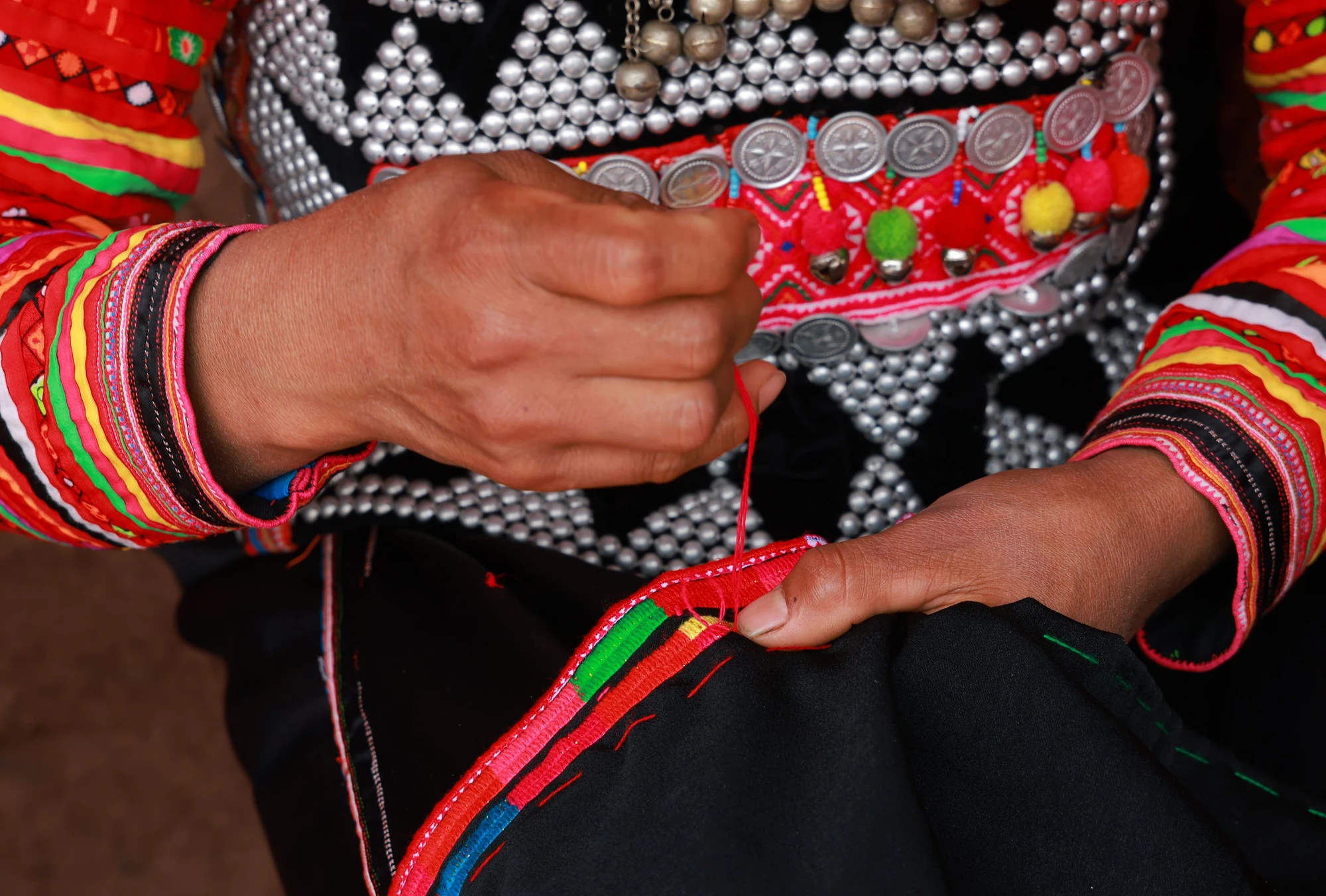 |
The diligent hand seldom rests. |
In the Ha Nhi ethnic community in Sin Thau, there are many outstanding women. One of them is Mrs. Su Lo De - one of the few Ha Nhi people who still knows the ancient songs and dances.
She said that in the past, during Tet, when they were not busy with feasts and ceremonies, the Ha Nhi people would sing and dance together, and then the whole village would prepare a meal together to pray for good luck in the year. Many times she had the opportunity to perform at domestic competitions, exchange with foreign countries, and now still teaches her students.
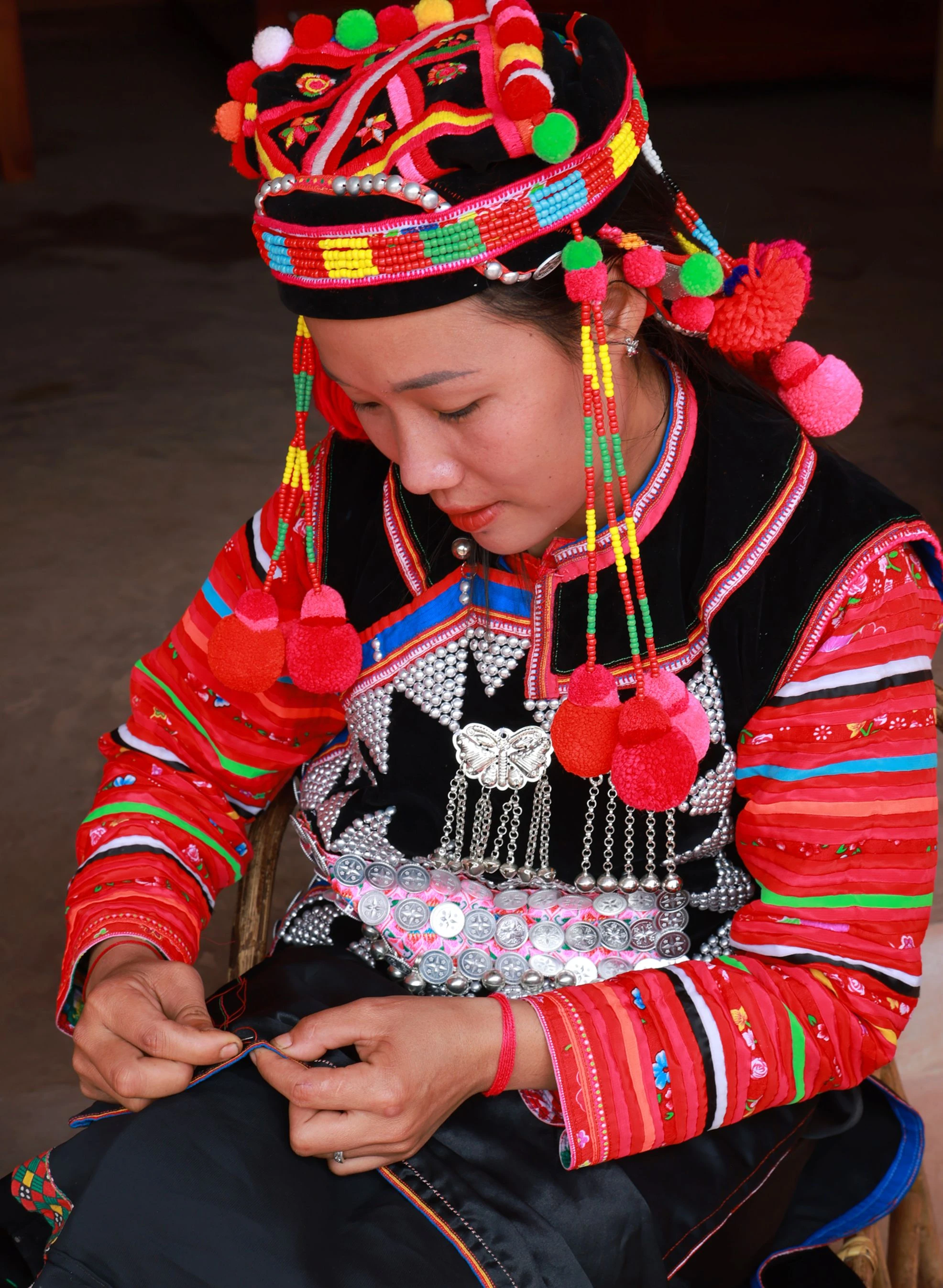 |
The beauty of Ha Nhi women is expressed in many aspects of life. |
The memory she remembers most is from many decades ago, when she was young, she participated in the district's performing arts. At that time, the road was not yet open, walking on the trail took five days, every now and then she would see a deer running out, after singing she would walk back. "I knew the road was long, my legs were tired, but singing and dancing made me very happy", she recalled the memories of that time.
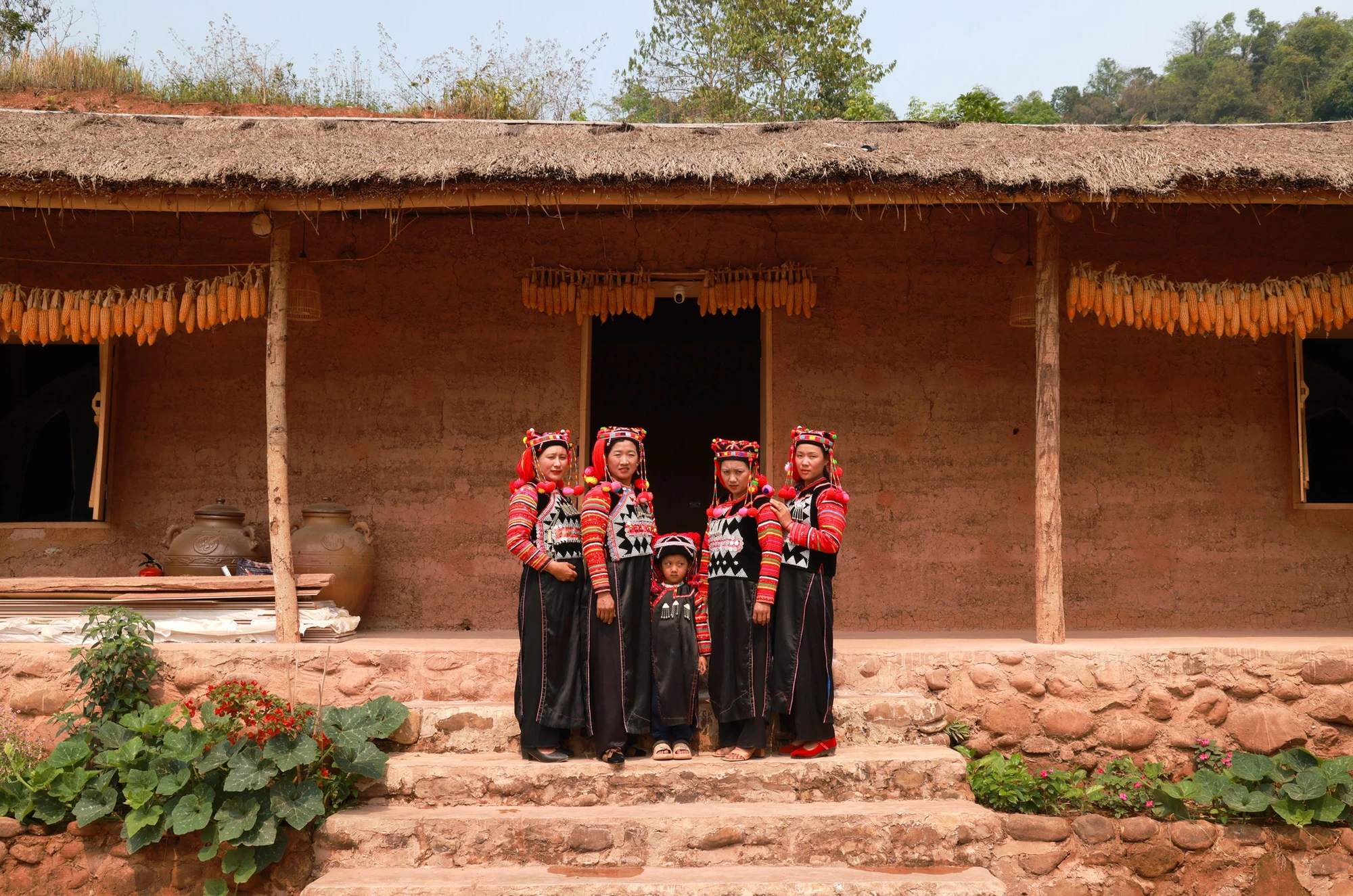 |
These traditional houses have been used as homestays and Ha Nhi women are actively developing the tourism economy. |
In their conversations, Ha Nhi women also did not forget to mention a special thing in their culture, which is that from the time they can walk, girls are dressed in traditional costumes made by their grandmothers and mothers. That carries the spirit of continuity and preservation of cultural identity from generation to generation.
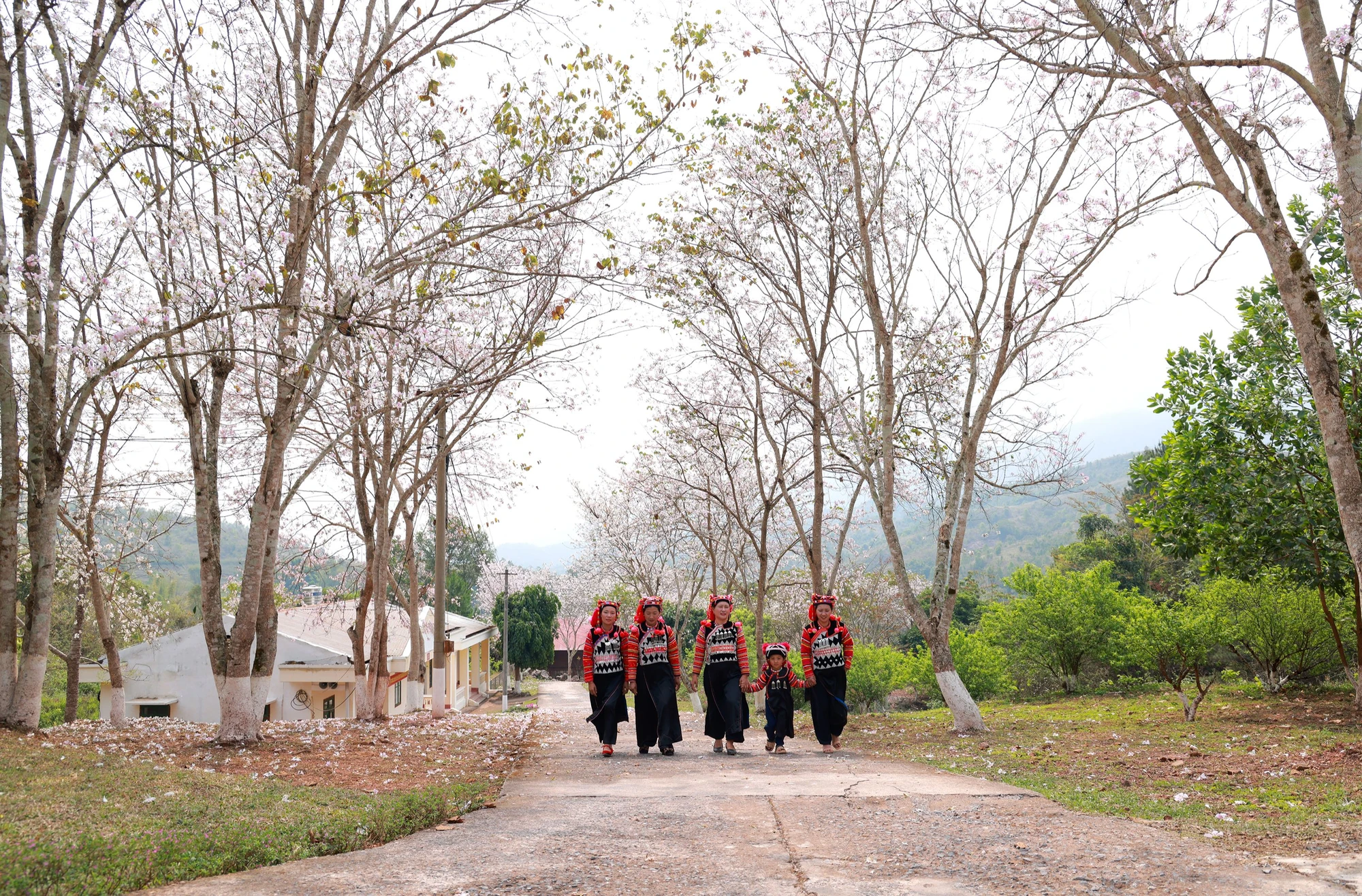 |
In the border flower season. |
The traditional costumes of the Ha Nhi people have been passed down and preserved through many generations. The older, experienced women in the families always try to pass on their sewing skills to the younger generation so as not to lose their identity.
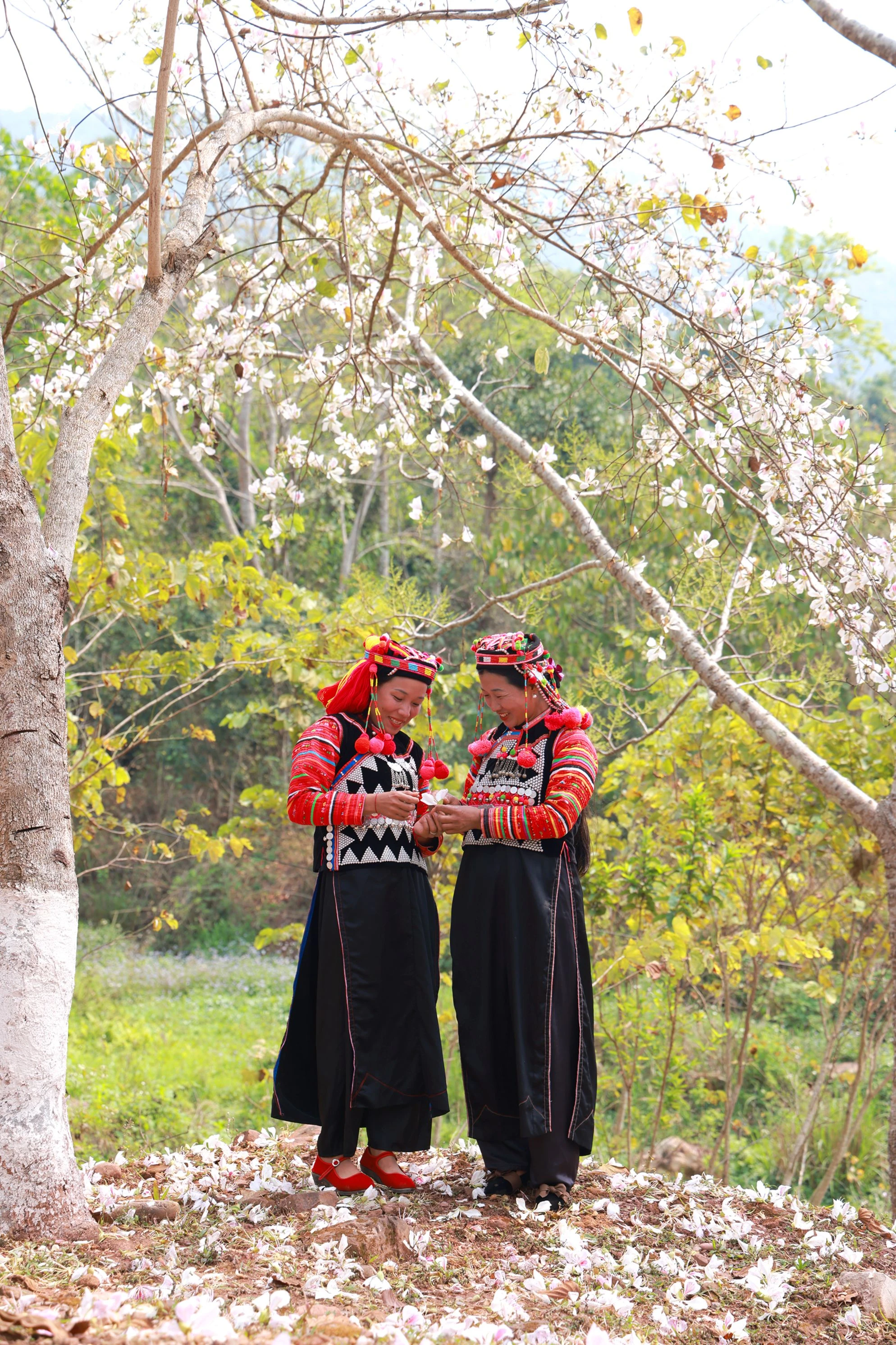 |
The costumes also reflect the good qualities of Ha Nhi ethnic women. |
In the border commune of Sin Thau, the image of women sitting sewing and embroidering every evening when housework is over leaves a deep impression of affection, becoming a symbol of diligence, perseverance and dedication.
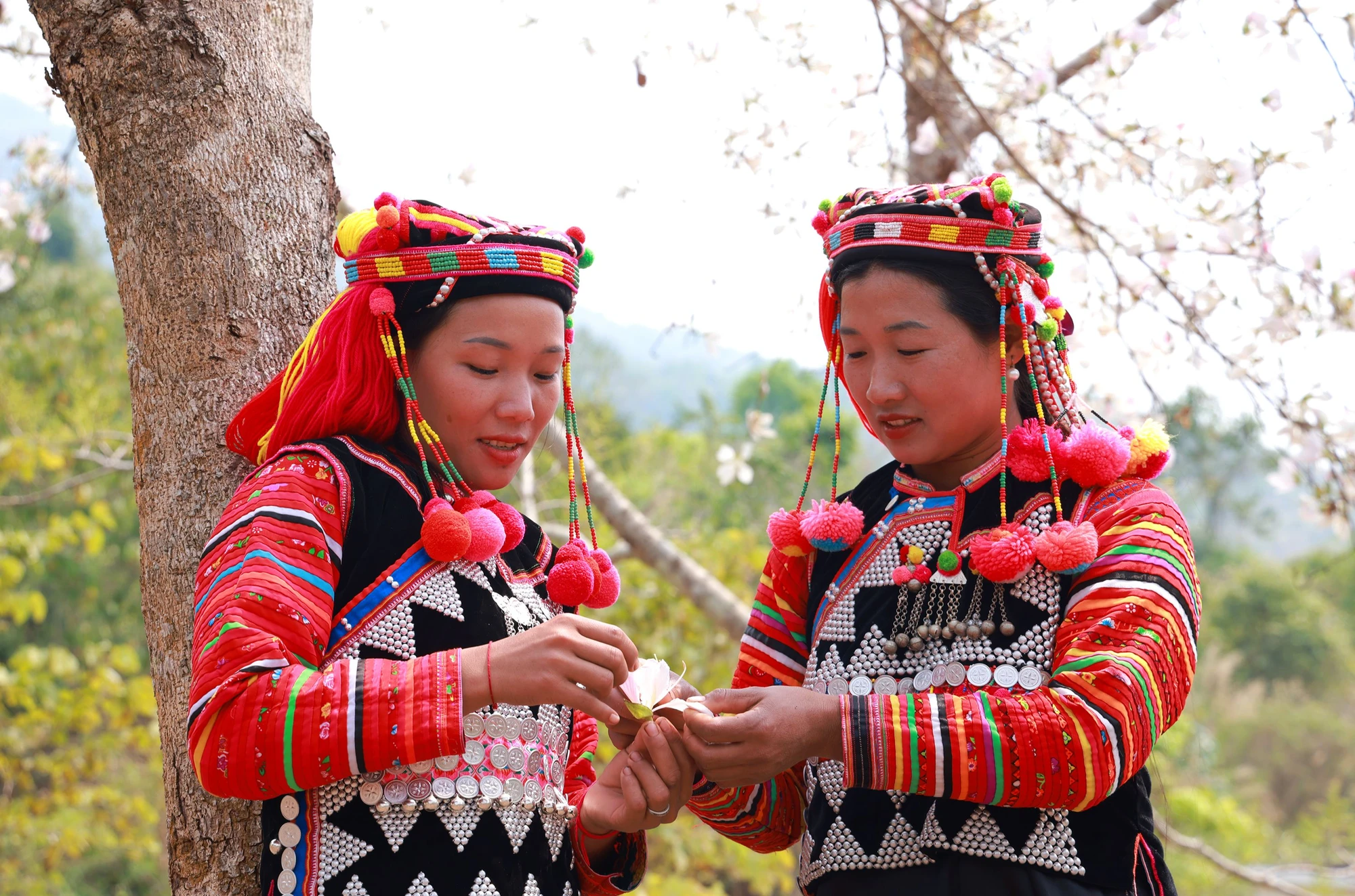 |
They are likened to vibrant wild flowers. |
The uniqueness of the costumes is also reflected in the flexibility according to the age and each stage of a woman's life. The costumes of young girls are often bright in color, like flowers blooming, showing off their beauty, full of vitality in the mountains and forests. For middle-aged and older women, the costumes will have darker colors, showing maturity and elegance.
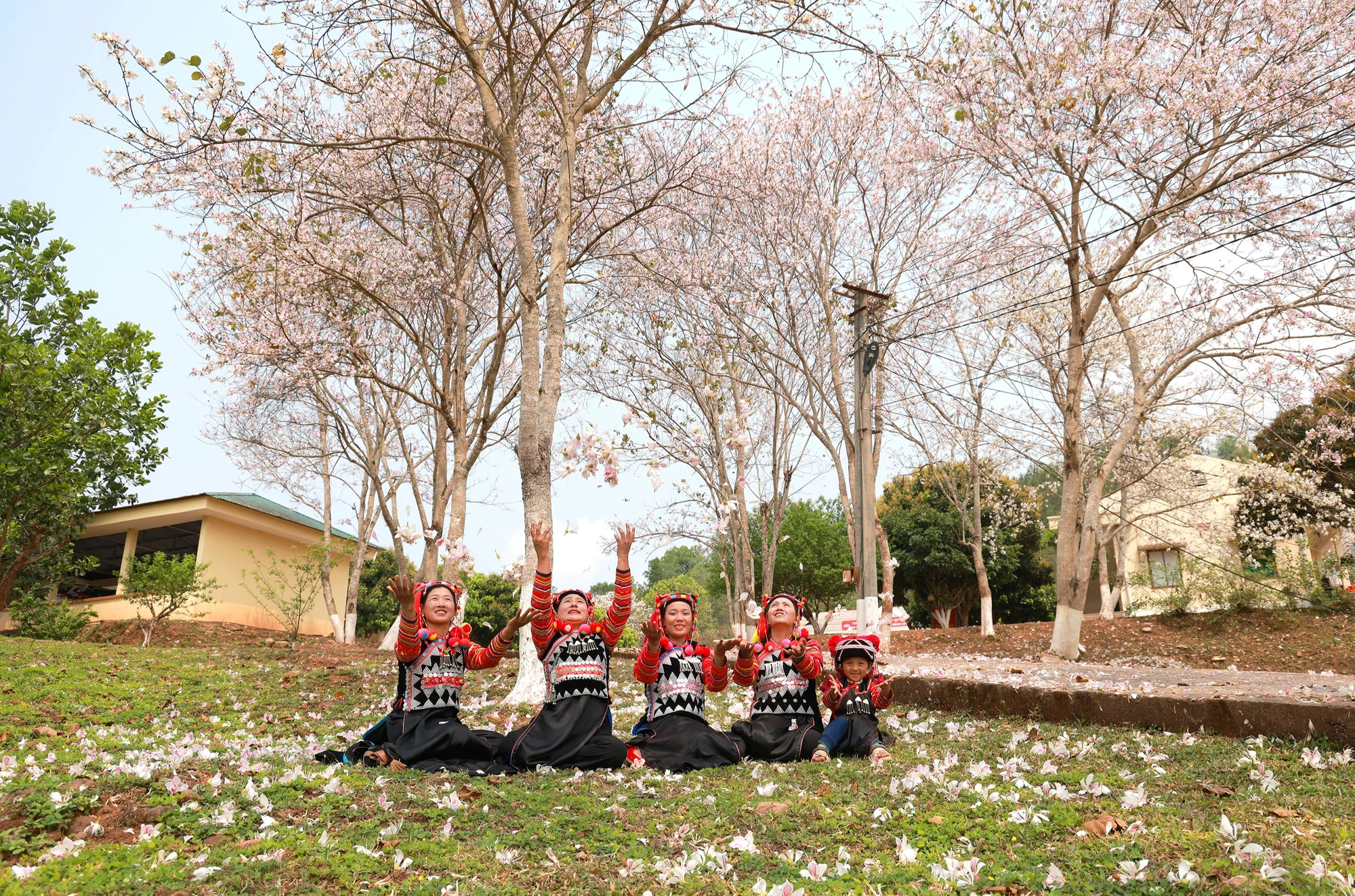 |
Optimism is an important value of Ha Nhi women. |
During each holiday or when participating in cultural and religious rituals, Ha Nhi women always wear their most beautiful costumes in the unique cultural space of the community. On holidays such as: Rainy season festival (De Khu Cha), new rice celebration (Che Su Cha), or village worship ceremony (Ga Ma Thu)... costumes also show respect and hope for good things in life.
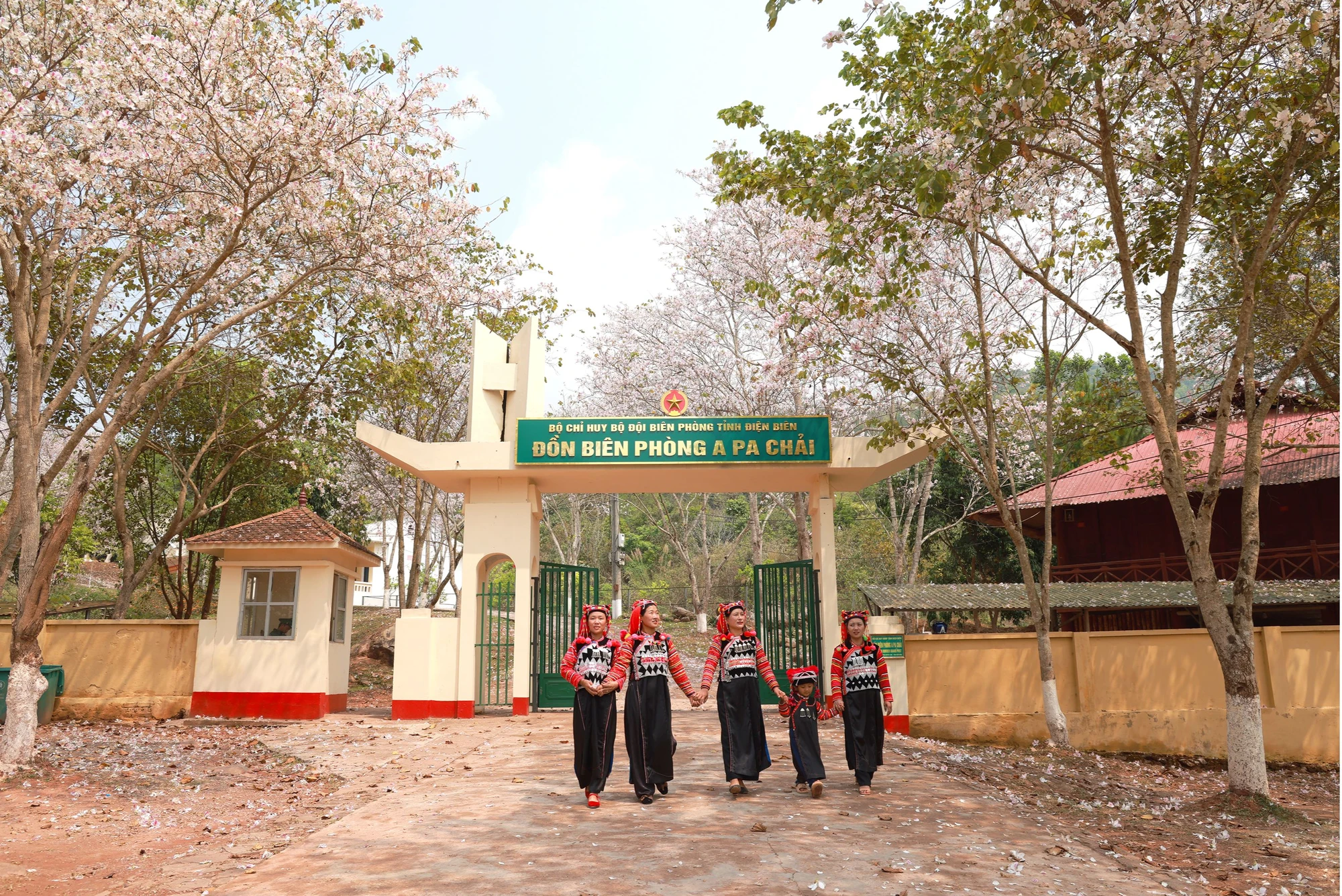 |
Whenever A Pa Chai Border Guard Station has an important event, Ha Nhi women enthusiastically contribute their singing and congratulatory voices. |
During Tet holidays of the Ha Nhi people, the role of women is very important. Before Tet, they cut, sew and embroider traditional ao dai, and raise livestock and poultry to prepare an abundant source of food for Tet.
On New Year’s Day, before slaughtering a pig for the feast, women in every household will always make banh troi (rice dumplings) to offer to their ancestors, praying for joy and health in the New Year. On the second day, they pound banh day (rice dumplings), both to offer to the ancestors and to entertain guests. Guests who come to visit on New Year’s Day are always given a package of meat and a package of banh troi (rice dumplings) to take home when they leave.
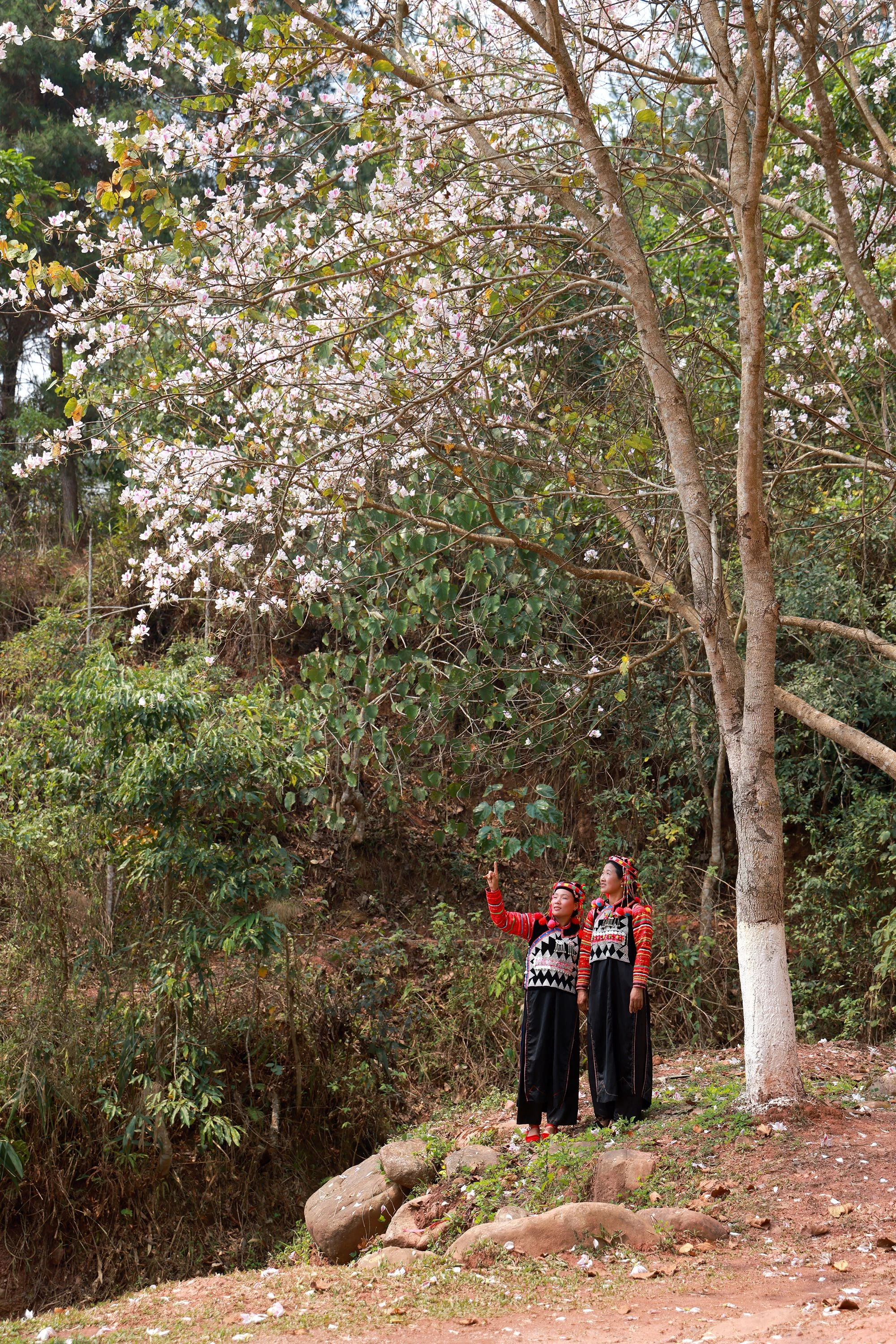 |
These images are often seen during the festival season, returning to daily life, Ha Nhi women will wear work clothes according to their ethnic identity. |
In impressive costumes, Ha Nhi women participate in many cultural activities, folk singing, folk dancing... expressing their love for their homeland, land, and crops; contributing to enriching traditional beauty.
As life becomes more and more developed, the importance of preserving the traditional costumes of Ha Nhi women is increasingly appreciated. Especially when the art of making costumes of the Ha Nhi people was recognized as a National Intangible Cultural Heritage in 2023, it contributed to further highlighting the role in preserving and promoting cultural values through costumes.
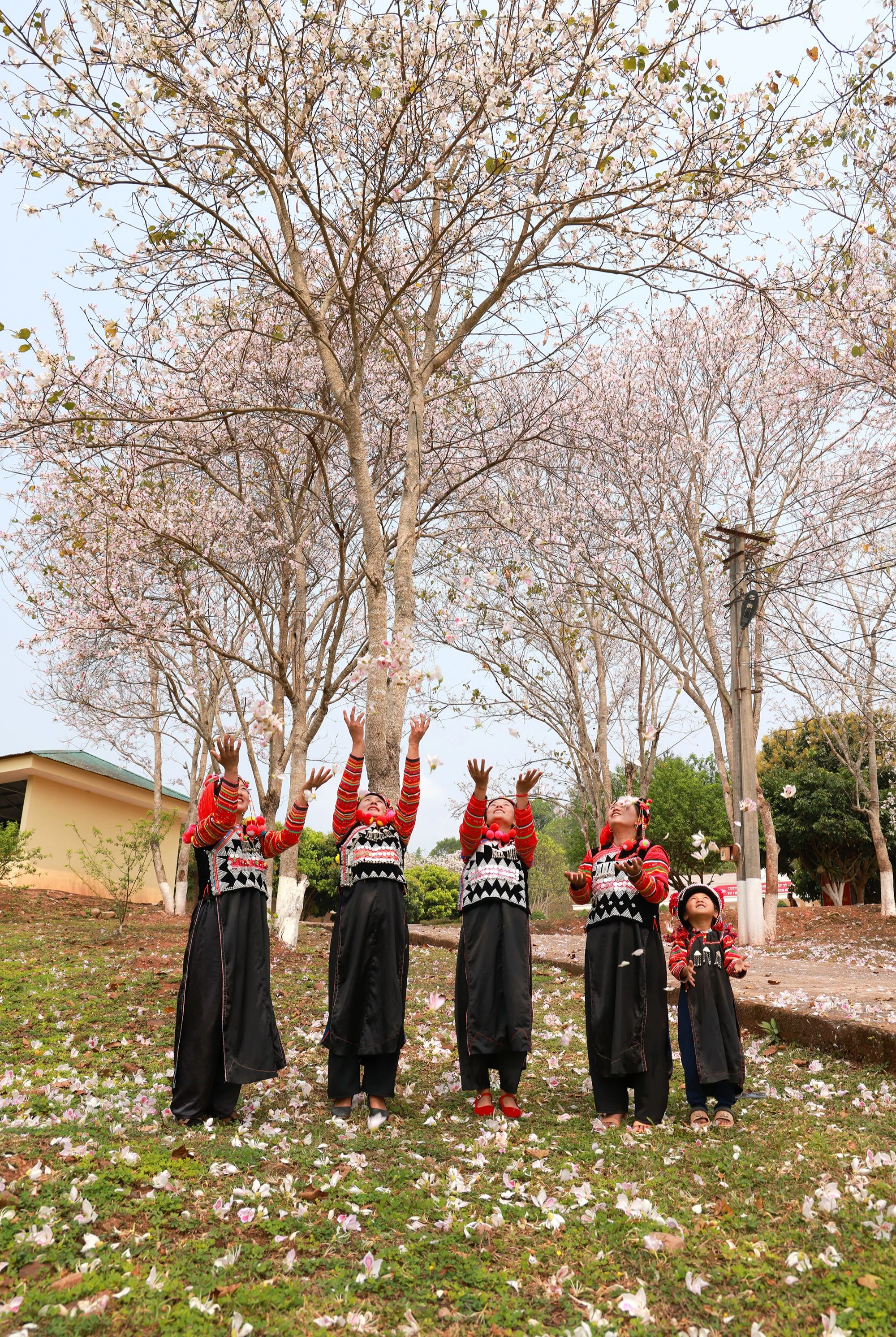 |
Ethnic people's lives blend in with the magical beauty of nature. |
With the constant efforts of the community, especially the elderly women, the traditional costumes of the Ha Nhi people have been passed down from generation to generation, enriching the cultural treasure and refreshing the community life in the modern life.
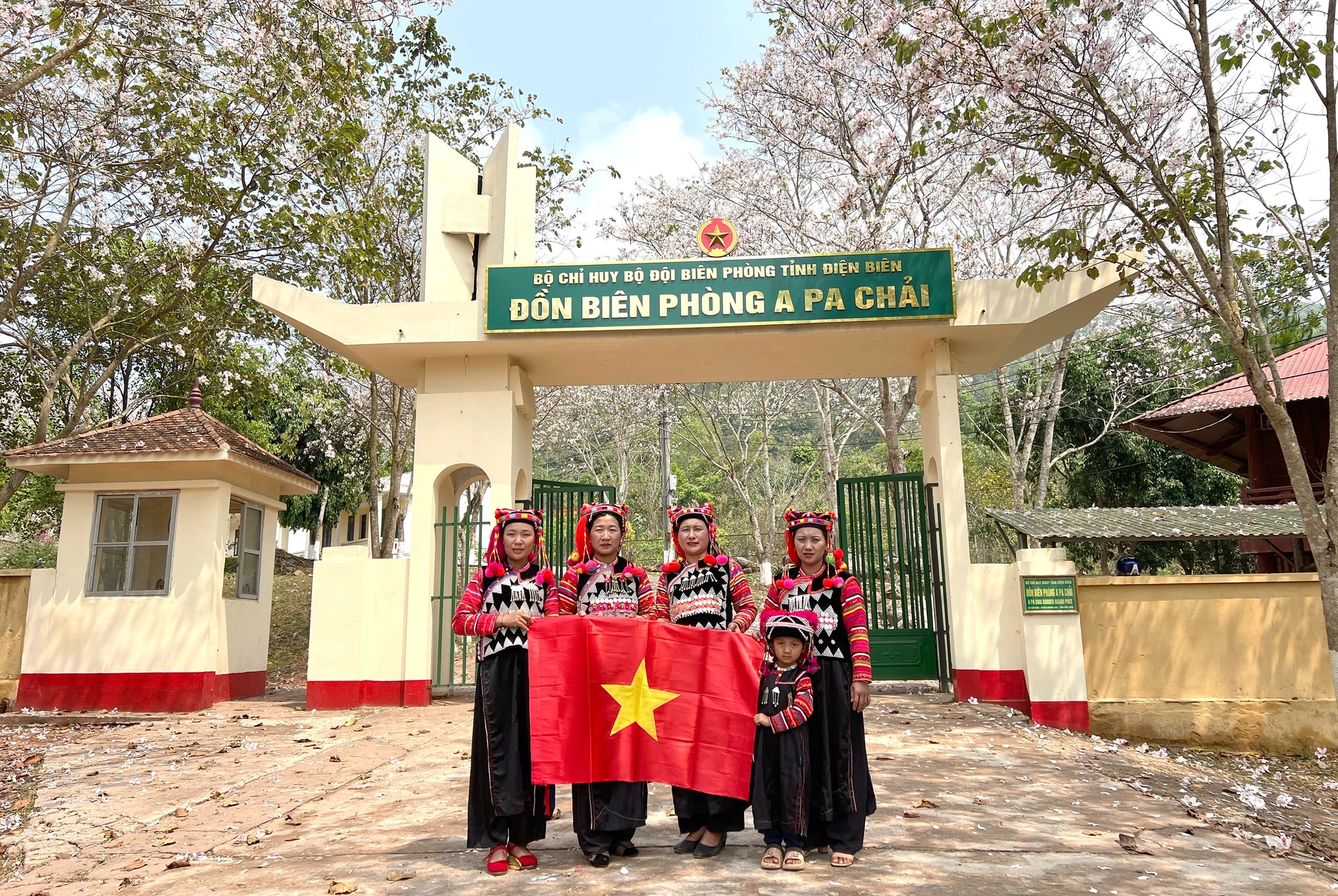 |
Border guards are a support for people to develop their lives and preserve cultural identity. |
In the border communes of Muong Nhe district, local authorities and social organizations are also actively supporting and encouraging the younger generation to learn and preserve the traditional tailoring profession, helping to prevent ethnic costumes from being lost over time.
Through each thread and each embroidery pattern, the Ha Nhi people have put into their costumes their love, pride and desire to preserve and promote their national identity. Even though life has changed, that beauty remains like a flickering flame in the vast wilderness, in the desire for lasting existence.
Source: https://nhandan.vn/ve-dep-ban-sac-qua-trang-phuc-phu-nu-ha-nhi-post868337.html


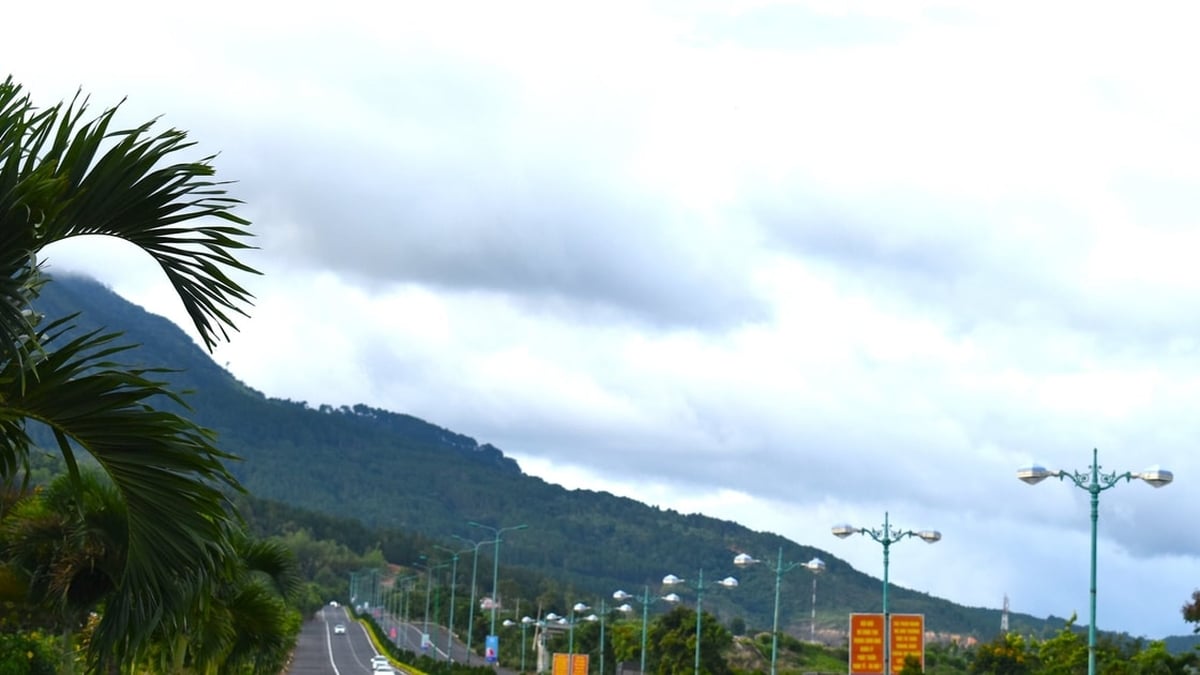
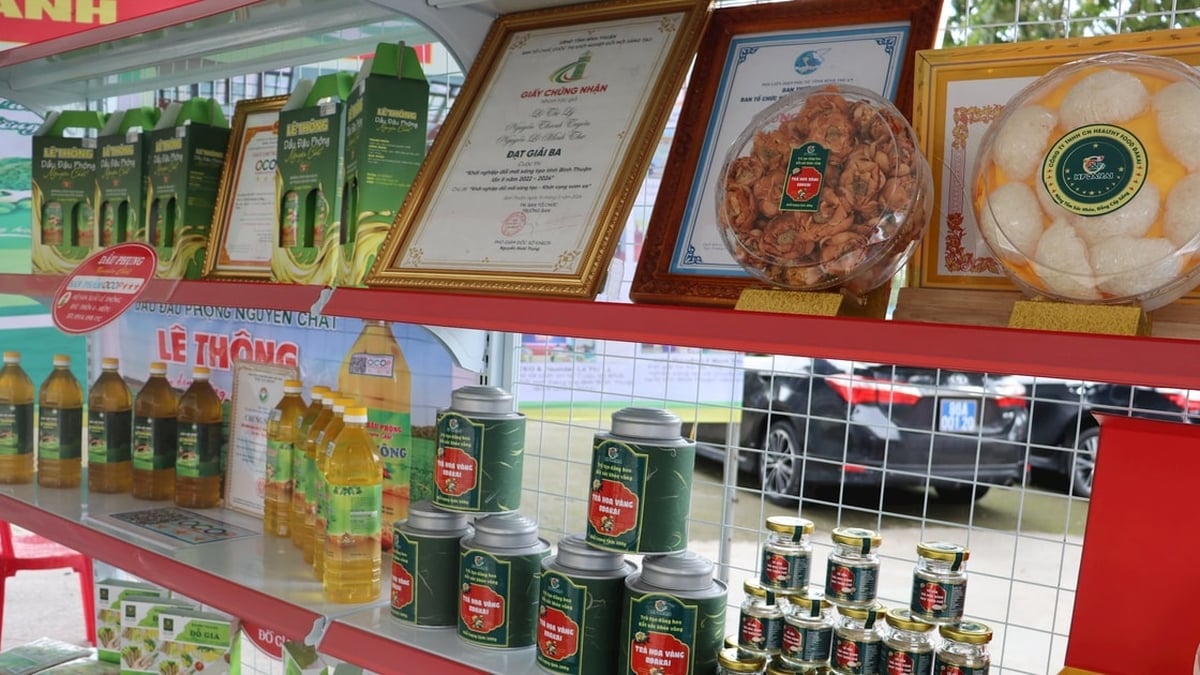

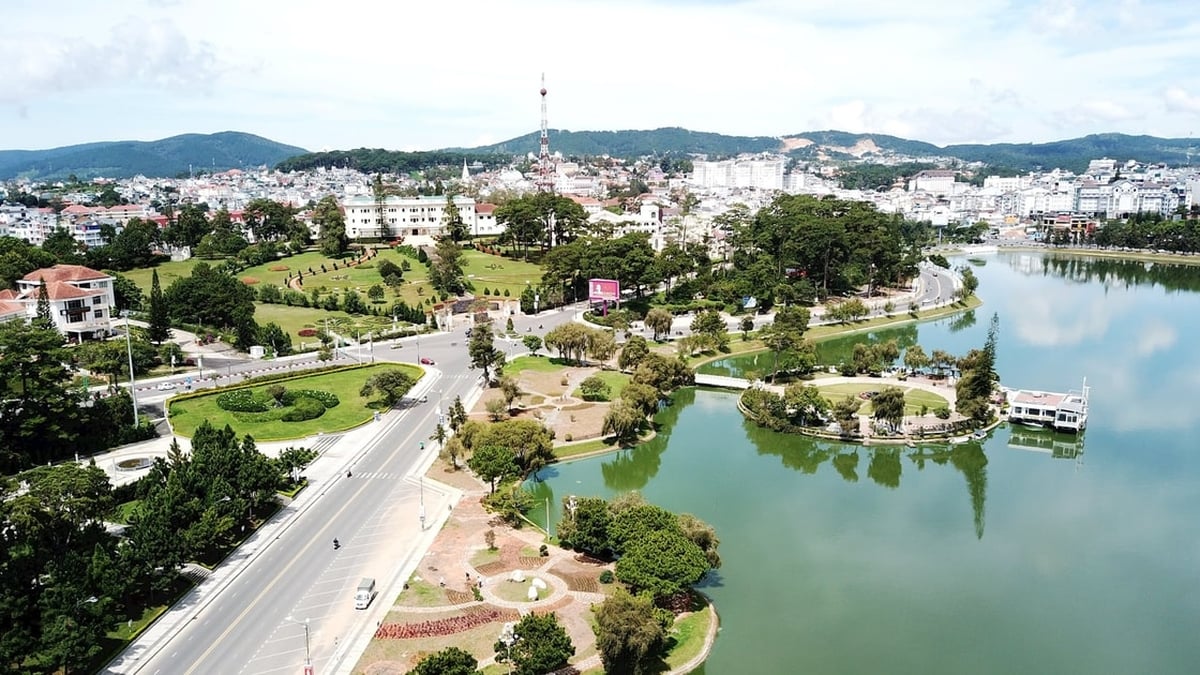

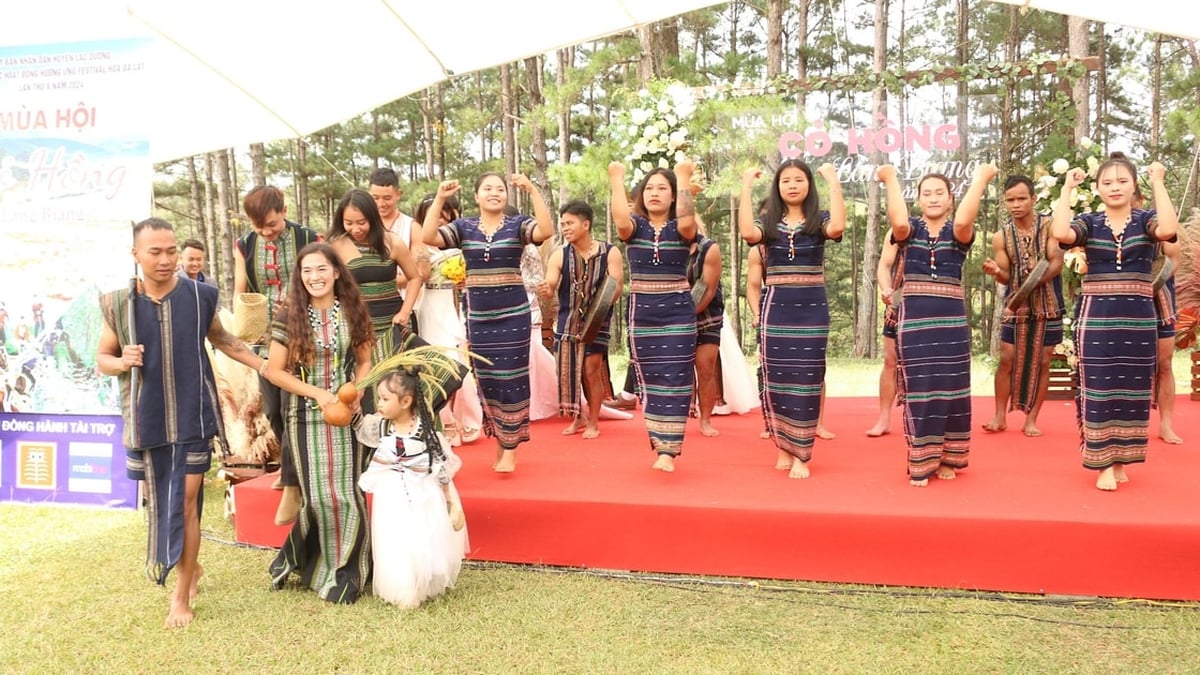
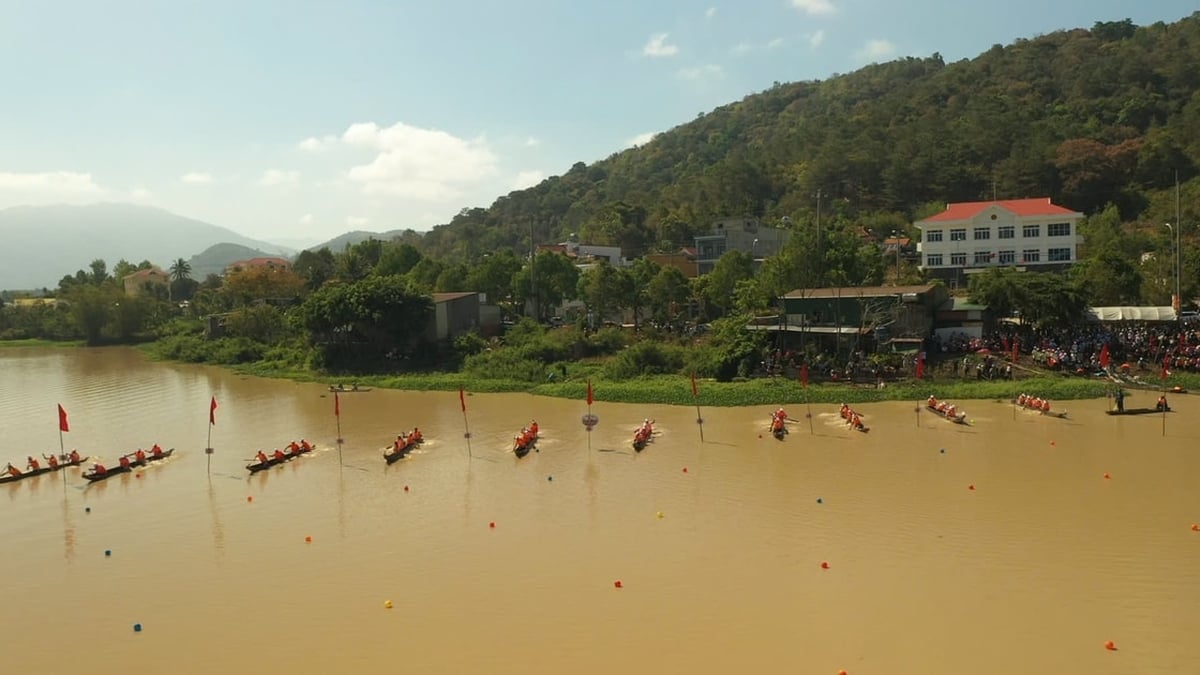
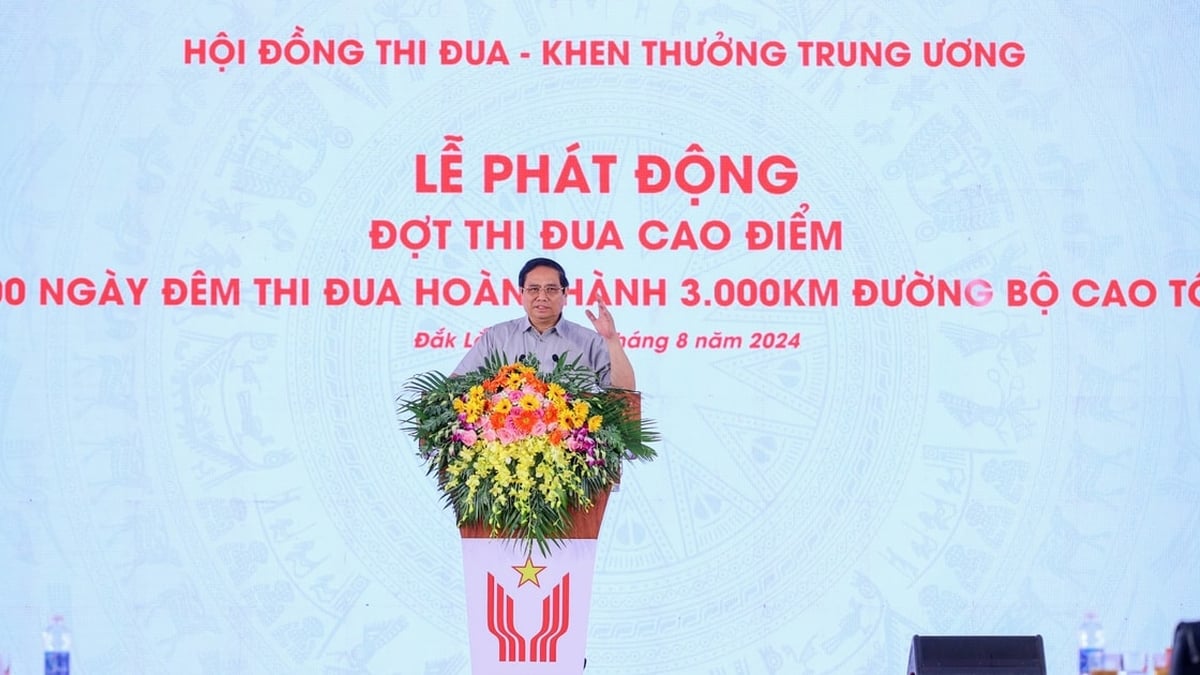
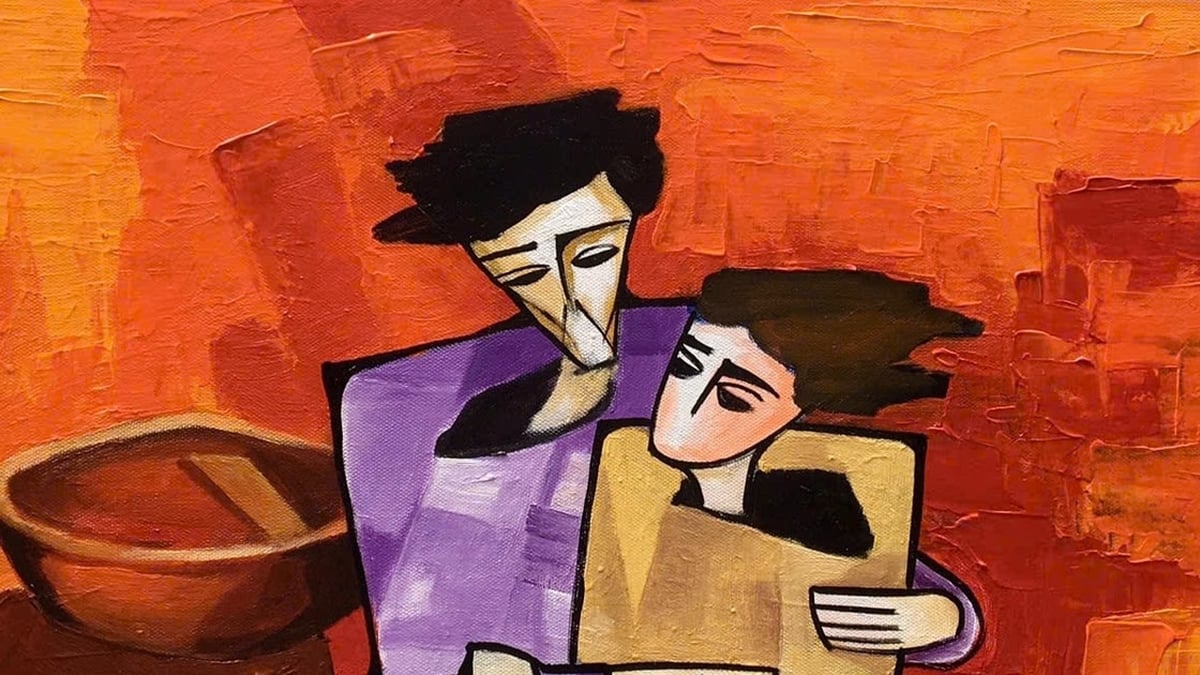























































































Comment (0)